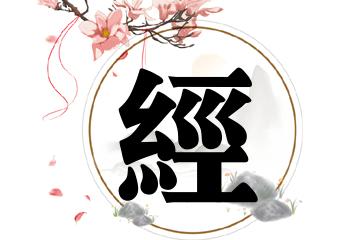如何为阅读的文章取一个绝佳的名字
- 作者: 杨欣桐
- 来源: 投稿
- 2024-09-24
一、如何为阅读的文章取一个绝佳的名字
如何为阅读的文章取一个绝佳的名字
1. 确定文章的主题和重点
阅读文章并确定其主要论点或信息。
考虑文章的范围、目标受众和写作风格。
2. 使用关键词和短语
从文章中提取相关的关键词和短语,这些关键词和短语可以准确描述文章的内容。
避免使用过于笼统或模糊的术语。
3. 保持简洁和清晰文章标题应简洁明了,通常不超过 10-15 个单词。
避免使用冗长的句子或不必要的细节。
4. 考虑目标受众考虑文章的目标受众,并使用他们熟悉的语言和术语。
确保标题对他们有吸引力并引起他们的兴趣。
5. 使用动作动词使用动作动词可以使标题更具活力和吸引力。
例如,使用“探索”、“分析”或“揭示”等动词。
6. 提出问题提出一个问题可以激发读者的兴趣并鼓励他们阅读文章。
确保问题与文章的主题相关,并且具有吸引力。
7. 使用比喻或隐喻比喻或隐喻可以使标题更具创意和引人注目。
例如,使用“思想的迷宫”或“知识的灯塔”等比喻。
8. 避免陈词滥调避免使用陈词滥调或常见的标题。
尝试提出一个原创且引人注目的标题,可以脱颖而出。
9. 测试标题在发布文章之前,向朋友、同事或目标受众测试标题。
征求反馈并根据需要进行调整。
示例:原始阅读的重要性
绝佳解锁知识的宝库:阅读的力量
原始气候变化的影响绝佳气候危机:迫在眉睫的威胁
原始人工智能的未来绝佳人工智能:塑造未来的机器
二、如何为阅读的文章取一个绝佳的名字英语
How to Craft a Killer Title for Your Article
1. Identify Your Target Audience
Consider who you're writing for and what they're interested in.
Use language that resonates with their knowledge and interests.
2. Highlight the Main Idea
The title should encapsulate the central message or argument of your article.
Use specific and concise language that conveys the essence of your .
3. Use Keywords
Include relevant keywords that potential readers might search for.
This will help your article appear in search results and attract more traffic.
4. Keep it Short and Sweet
Aim for a title that is around 60-70 characters long.
Long titles can be overwhelming and less likely to be read.
5. Use Power Words
Incorporate words that evoke emotion, curiosity, or urgency.
Examples include: "unveiled," "revealed," "secrets," "must-know."
6. Create a Sense of Mystery
Hint at the of your article without giving everything away.
Use intriguing phrases or questions that pique readers' interest.
7. Use Numbers or Lists
Titles that include numbers or lists can be more attention-grabbing.
Examples: "5 Ways to Improve Your Writing," "10 Tips for Success."
8. Use Alliteration or Rhyme
Titles that use alliteration or rhyme can be more memorable and engaging.
Examples: "The Power of Persuasion," "The Art of Argument."
9. Test Your Title
Ask friends, colleagues, or potential readers for feedback on your title.
See if it resonates with them and if it accurately reflects the of your article.
10. Revise and Refine
Once you have a draft title, take some time to revise and refine it.
Make sure it is clear, concise, and attention-grabbing.

三、如何为阅读的文章取一个绝佳的名字英文
How to Craft a Killer Title for Your Article
1. Identify Your Target Audience
Consider who you're writing for and what they're interested in.
Use language that resonates with their knowledge and interests.
2. Highlight the Main Idea
The title should convey the central message of your article.
Use specific keywords that accurately describe the topic.
3. Use Strong Verbs
Verbs create action and intrigue.
Choose verbs that evoke emotion or curiosity.
4. Keep it Concise
Aim for a title that's around 6-12 words long.
Remove unnecessary words and focus on the essentials.
5. Use Numbers or Lists
Numbers and lists can make your title more specific and attention-grabbing.
Example: "5 Ways to Improve Your Writing Skills"
6. Ask a Question
Questions can spark curiosity and encourage readers to click.
Example: "Is Your Website Losing You Customers?"
7. Use Emotional Language
Words that evoke emotions can make your title more compelling.
Example: "The Heartbreaking Truth About Climate Change"
8. Use Alliteration or Rhyme
Alliteration and rhyme can make your title more memorable.
Example: "The Power of Positive Thinking"
9. Test Your Title
Ask friends, colleagues, or potential readers for feedback on your title.
See if it resonates with them and if it accurately reflects the of your article.
10. Use a Title Generator
If you're struggling to come up with a title, try using a title generator.
These tools can provide suggestions based on your keywords and topic.
四、如何为阅读的文章取一个绝佳的名字呢
为阅读的文章取一个绝佳名字的技巧
1. 确定文章的主题和重点:
文章主要讨论什么?它试图传达什么信息或观点?
2. 使用关键词:识别文章中最重要的关键词或短语。
这些关键词应该准确反映文章的内容。
3. 保持简洁:标题应简洁明了,通常不超过 10 个单词。
避免使用冗长的或不必要的语言。
4. 引起好奇心:标题应引起读者的兴趣并让他们想要了解更多。
使用引人注目的动词、形容词或问题。
5. 考虑目标受众:标题应与文章的目标受众产生共鸣。
使用他们熟悉的语言和术语。
6. 使用数字或列表:
数字或列表可以使标题更具体和引人注目。
例如:“5 个提高阅读理解力的技巧”或“阅读文章的 3 个步骤”。
7. 避免陈词滥调:避免使用常见的或陈旧的标题。
尝试提出一个原创且令人难忘的标题。
8. 使用标点符号:标点符号可以增强标题的清晰度和影响力。
例如,使用冒号或破折号来介绍文章的重点。
9. 寻求反馈:在确定标题之前,请向同事、朋友或导师寻求反馈。
他们的意见可以帮助你完善标题并确保它有效。
示例:原始阅读技巧
改进后的提高阅读理解力的 5 个实用技巧
原始文章分析改进后的深入分析:文章的结构和论点
原始历史事件改进后的二战的转折点:诺曼底登陆




